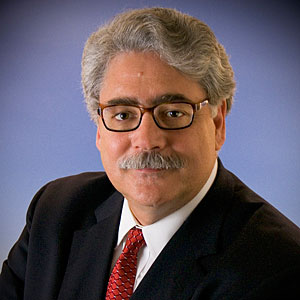When asked how he would improve the American Institute of Architects, George H. Miller, FAIA, offers a mantra. “Communication, communication, communication,” he says, insisting that the organization needs to evolve into a stronger public voice for good design. A partner at Pei, Cobb, Freed & Partners, Miller recently received an opportunity to put his philosophy into practice. At this year’s annual AIA convention, he was elected to take over as the institute’s president in 2010.

Born in Berlin, Germany, and raised in Pennsylvania, Miller studied at Pennsylvania State University and joined I.M. Pei & Partners in 1975. For more than 30 years, he has worked on celebrated and diverse projects for the firm, including the National Constitution Center in Philadelphia, Pennsylvania, the Museum of Modern Art in Luxemburg, and the NASCAR Hall of Fame in Charlotte, North Carolina, which is slated for completion in the year he assumes the AIA presidency.
Miller has held numerous leadership positions at the AIA, including a prominent role as New York regional director for three years. As president at the national level, he has resolved to sway both the internal priorities of the organization and the way that it represents the profession to the public. He recently spoke with RECORD about his ambitions.
William Hanley: When you take over as director of the AIA in 2010 what will be at the top of your agenda?
George Miller: First and foremost, the AIA always has to focus on design excellence. Within that focus, over the past number of years, have been issues related to the environment. I'm really encouraged to hear the voice of the public in this area and the attention that the public is giving it.
As architects, we've always been concerned with environmental design, but now I think the pressure to step it up is coming from our clients’ focus on the cost of energy. The COTE Awards and partnering with the USGBC have given sustainable design a lot of exposure, and the price of fuel and the like are really bringing the importance home. Years ago when energy was cheap, people didn't pay as much attention.
WH: What steps will you take to help members meet the demands of clients pushing for sustainable work?
GM: We have an obligation to disseminate the knowledge that really celebrates that kind of design. We have, at the AIA, something called Soloso, which is putting into place a knowledge base where members as well as educators and others can go to get information—like Wikipedia, except all the information is vetted. Case studies exploring what works and what doesn’t are also very important.
WH: You have mentioned a few successful programs so far, but what current AIA initiatives do you plan to revisit because they have not worked?
GM: Diversity is an area where the AIA has been less than successful in the past, but it’s really critical for all our futures. For example, 50 percent of the enrollment in architecture schools is now female, yet we don’t have a proper representation of women as leaders in the profession.
This year, we had a diversity plenary, and educators, business leaders, and AIA leaders from all over the country came to talk about how we can become more diverse. But we really need to go into universities and ask architecture departments to at least reflect the overall diversity of their universities in their departmental enrollments.
WH: Looking at the other side of the previous question, which AIA programs have been most successful and how will you push them forward in 2010?
GM: When I was director of the New York chapter, we were really able to develop the Center for Architecture, which has been a great vehicle for public outreach, and it has been picked up as an idea across the country. They just opened a Center for Architecture in Philadelphia, and they’re also working on them in Dallas and a few other cities. These tend to be urban oriented, but you can also do this kind of outreach at universities throughout the country.
WH: Why is outreach so important?
GM: I think we have to tell the story of the importance of design and have exhibitions that celebrate it. We should really work to elevate the public’s understanding of quality in design because when people start clamoring for better quality, we will have no choice but to achieve it.


Post a comment to this article
Report Abusive Comment